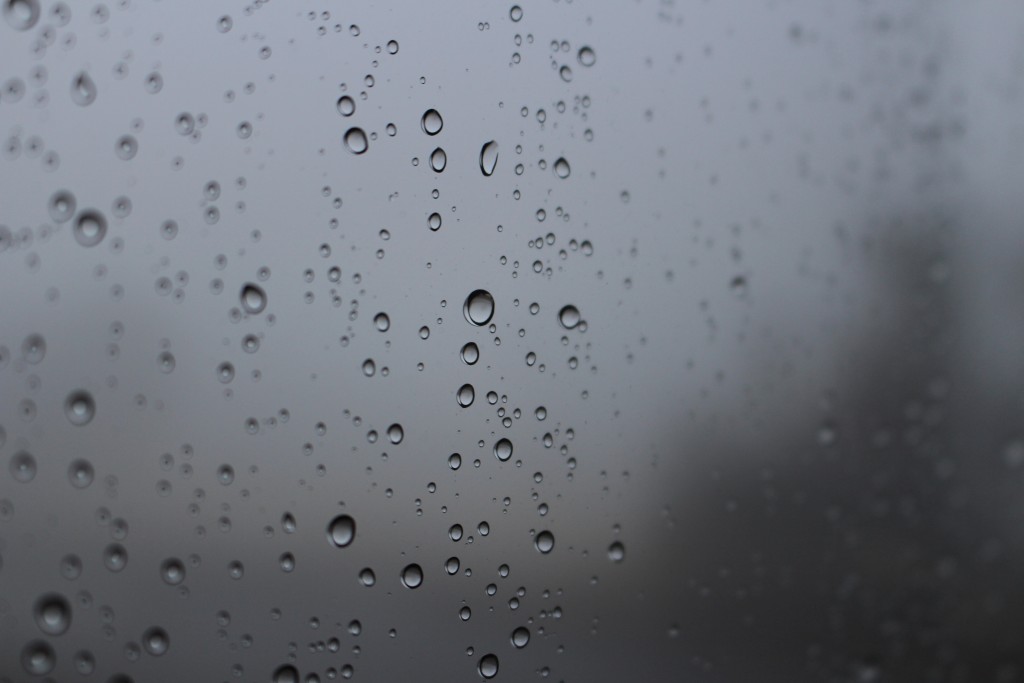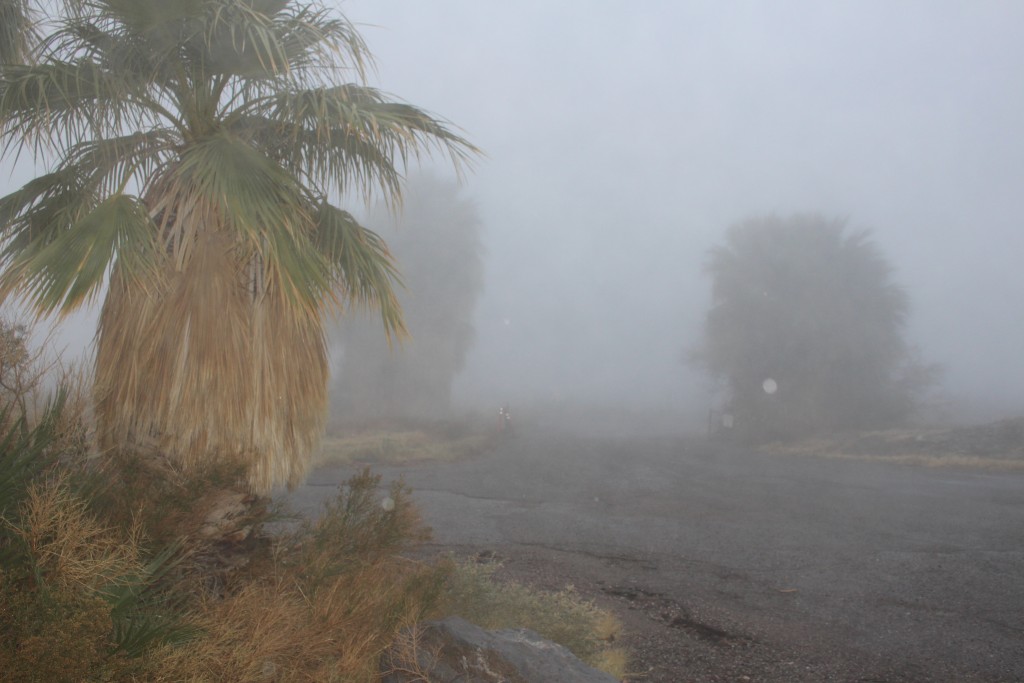
Part of the myth of Death Valley is that it never rains. Of course, that isn’t quite true because Death Valley averages two inches of rain per year, which still isn’t much rain. The valley is located between three mountain ranges: the Sierra Nevada and Panamint ranges to the west and the Black Mountains to the east. The mountain ranges, especially the ones to the west, steal the water from any weather front that moves through.
Last week we had an unusual rainy day in Death Valley. Overnight and into the next morning we got 1/4 of an inch of rain. This was the first rain of the year. The previous day Tom and I had been able to watch the rain coming up the Valley. The dark clouds got closer all day long, but the rain didn’t come until after sunset so we couldn’t see the clouds when they finally arrived.
When we got up the next morning, fog blanketed the ground. Somehow we didn’t expect fog in Death Valley. By mid-morning the rain had stopped and the clouds began to lift. In the afternoon it was back to weather as usual – sunny and 60.
Tom and I have been reporting the weather every morning that we work. We check the high and low temperatures and the precipitation level. Then we call it in to the National Weather Service. Today was the first day we got to report precipitation: one millimeter since yesterday morning when the gauge was emptied.
Tom and I spent our rainy day hanging around the campsite. In the morning maintenance men came and removed the palm tree that was next to our site. Palm trees are not indigenous to Death Valley and they suck up what little water there is, so the naturalists have been pushing to get rid of them unless they have “cultural or historical significance.” I guess some of the other palm trees at our campground have that significance, so they just got a trim job.
A rainy day in Death Valley is a day to be treasured (like a sunny day in Ohio!). It probably won’t happen again for a while but we enjoyed it while it lasted.


60? Oh, what I’d give for a temp of 60 right now! We got lots more blowing snow today! Funny about the palm trees. Who knew?